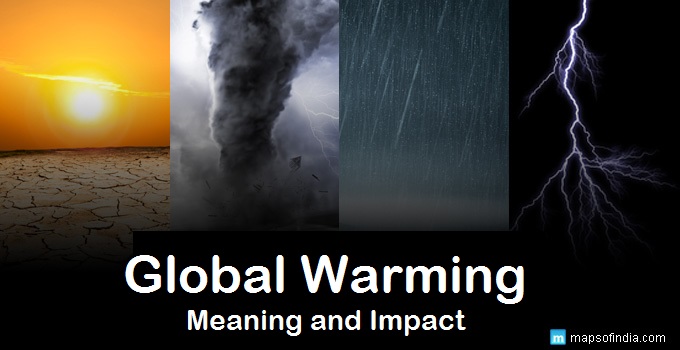While COVID-19 has devastated various countries, the threat posed by global warming still remains. The world has been getting warmer due to human activities which drive up carbon dioxide and emissions in the air. Global warming is the steady increase in the average surface temperature of the Earth over the past century mainly due to the concentrations of greenhouse gases being released by people burning fossil fuels in the atmosphere. The Earth’s average temperature has scaled nearly 1 degree Celsius or 2 degrees Fahrenheit since 1880. The average surface temperature of the Earth was 1.17 degrees Celsius more than the average for the pre-industrial time frame of 1880-1900 till 2019.
The rising temperatures aren’t stable at every place. In some areas, the Earth’s temperature has already risen by over 1.5 degrees Celsius since pre-industrial times. Nearly 20% of the population lives in areas that have gone through this level of temperature rise. In 2010, 200 nations gave their assent to limit the global average temperature rise to no more than 2 degrees Celsius preventing the perils of climate change. However, meeting this purpose may be cumbersome as scientists admonish that more fossil fuels are being burned and more greenhouse gases are being released.
The heat-absorbing pollutants – namely methane, methane, nitrous oxide, water vapor and synthetic fluorinated gases – are called greenhouse gases, and the way it affects is known as the greenhouse effect.
Over the last 800,000 years, the Earth’s climate shifts numerous times by natural cycles and fluctuations. The current situation of global warming is a result of human activities. Example: Burning of fossil fuels such as coal, oil, gasoline, and natural gas, which has the greenhouse effect. India is the third largest in the world when it comes to greenhouse gases. The primary emitting source remains coal, followed by rice paddies and cattle. The country releases 3 gigatonnes (Gt) CO2eq of greenhouse gases every year – about two and a half tons per person – which is half the global average.
The pace at which sea levels are increasing across the globe is concerning. Intense weather like rampant destructive hurricanes, droughts, floods, and wildfires, are associated with climate change. It is caused by the shrinking of glaciers and the thermal expansion of the oceans as they intake atmospheric heat which is backed by emissions. As per experts, the recent Uttarakhand glacier burst in Chamoli is believed to be caused by climate change with an ecological risks
The decrease in the extent of snow and ice is an instance of global warming. Glaciers have been melting for several decades, with the rate of it increasing considerably over the last decade, annihilating the habitat of polar bears and other animals that live in arctic regions. Lowering the sea ice and melting glaciers make ice erosion damageable.
India’s large population implies that even small increases in emissions per person contribute to a massive amount of carbon dioxide and it could become the world’s biggest polluter. India has pledged a 33-35% for lowering the “emissions intensity” of its economy by 2030 in regards to 2005 levels. The head of the Energy and Resources Institute – an influential Delhi-based think tank, Ajay Mathur (who was the Indian delegation’s spokesman at the Paris climate summit in 2015) says, “India has a vast amount of energy-using infrastructure yet to be put in place. No matter what numbers you look at, we will at least double or double-and-a-half our energy consumption in the decade to 2030.”
The journal ‘Earth Systems and Environment’ has a published study that recommends that northwestern India is at “particularly high risk” to flooding from snow and glacier shrink led by temperatures estimated to increase by the end of the 21st century.








